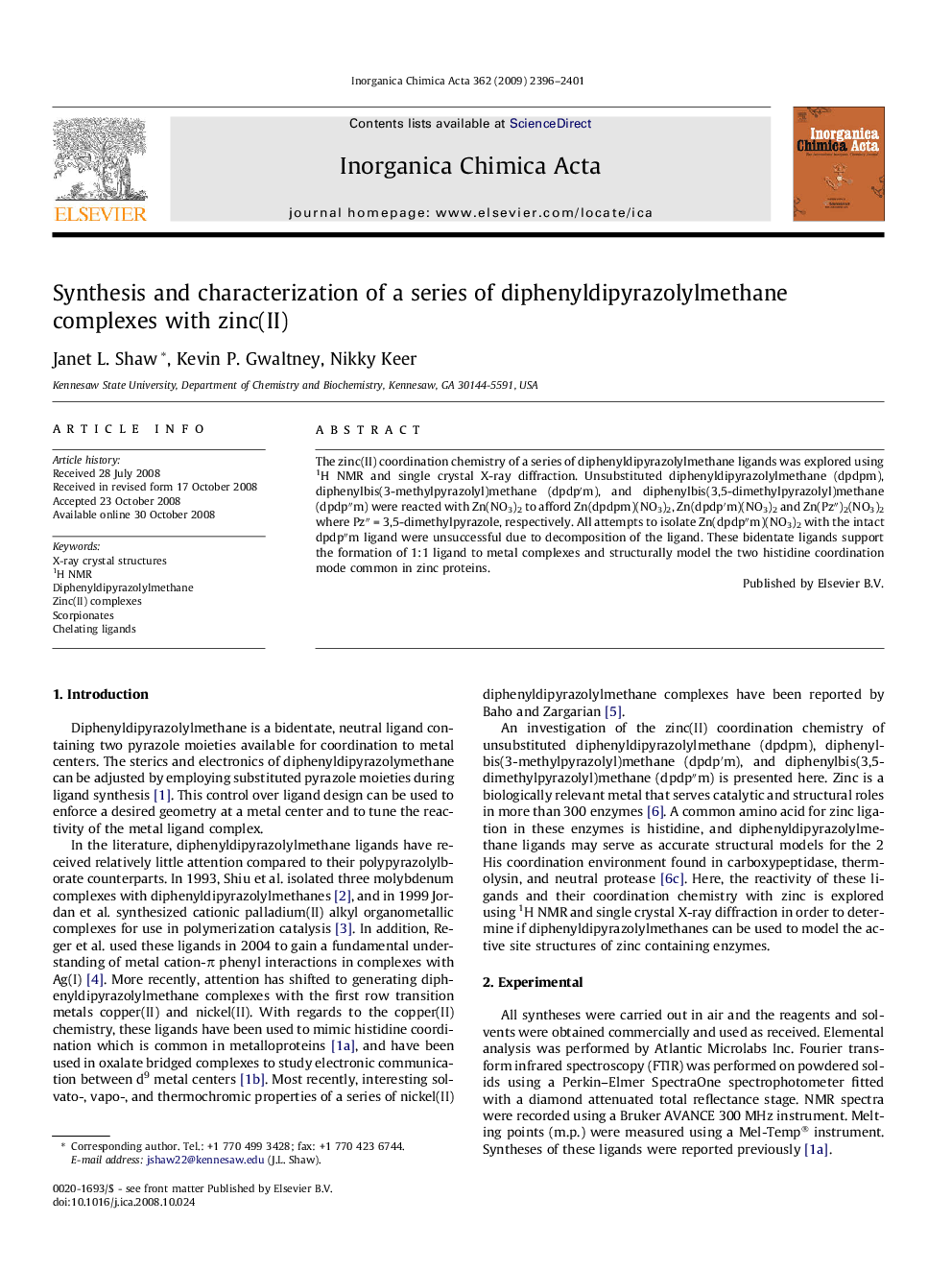| Article ID | Journal | Published Year | Pages | File Type |
|---|---|---|---|---|
| 1309869 | Inorganica Chimica Acta | 2009 | 6 Pages |
The zinc(II) coordination chemistry of a series of diphenyldipyrazolylmethane ligands was explored using 1H NMR and single crystal X-ray diffraction. Unsubstituted diphenyldipyrazolylmethane (dpdpm), diphenylbis(3-methylpyrazolyl)methane (dpdp′m), and diphenylbis(3,5-dimethylpyrazolyl)methane (dpdp″m) were reacted with Zn(NO3)2 to afford Zn(dpdpm)(NO3)2, Zn(dpdp′m)(NO3)2 and Zn(Pz″)2(NO3)2 where Pz″ = 3,5-dimethylpyrazole, respectively. All attempts to isolate Zn(dpdp″m)(NO3)2 with the intact dpdp″m ligand were unsuccessful due to decomposition of the ligand. These bidentate ligands support the formation of 1:1 ligand to metal complexes and structurally model the two histidine coordination mode common in zinc proteins.
Graphical abstractThree zinc(II) complexes with diphenyldipyrazolylmethane ligands have been synthesized and characterized. Two of the three complexes have similar 1:1 metal to ligand structures in the solid state. Methylation of both the 3- and 5-positions of the pyrazoles prevents isolation of the target zinc complex due to ligand decomposition.Figure optionsDownload full-size imageDownload as PowerPoint slide
